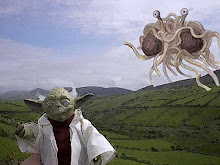 Premier Cities of the Ancient World
Premier Cities of the Ancient World
1.) Cahokia
Photo Credit: Cahokia Mounds State Historic Park, courtesy of State of Illinois, NPS photo
With upwards of 30,000 inhabitants at its peak in about 1100 AD,
Cahokia, Illinois remained North America's first and biggest real
city until the Northeast's population exploded in the late 18th
century. This urban center of the Mississippi culture had
organized leadership, commerce and a penchant for
mound-building. Monk's Mound, the largest at 100 feet tall,
dominates the site and was probably a mighty foundation
for the home of the resident spiritual leader.
2.) Xi'an
Photo Credit: Terracotta Warriors inside the Qin Shi Huang Mausoleum, 3rd century BCThe Chinese city of Xi'an was the central stronghold for all of the
country's most important ancient dynasties going back 3,000 years.
Tourists flocking to see the city's Terra Cotta Army, 6,000 unique
and life-size statues buried to protect the tomb of the great Zhou
emperor Qin Shi Huang, has made Xi'an famous in modern times.
That will only multiply when the emperor's sprawling mausoleum,
rumored to hold invaluable treasures and rivers of mercury, is finally
opened by archaeologists.
3.) Great Zimbabwe
Photo Credit: Jan Derk
At 1,800 acres in breadth and the only one of its kind in Africa,
the complex of Great Zimbabwe confounded early European
colonialists, who couldn't believe that sub-Saharan peoples
were capable of its creation. They were, in fact, and built the
complicated structures sometime after 1200 AD, when a wide-
reaching empire of about 20,000 Shona cattlemen ruled the area.
4.) Thebes
Photo Credit: Stockxpert
Most people think of Cairo and the Great Pyramids when they
think of ancient Egypt, but the heartbeat of the magical
pharaonic dynasties actually beat much further up the Nile at
Thebes. Thebes was the ruling capital of ancient Egypt during
its most dominant eras, beginning with the Old Kingdom 4500
years ago, and is home to two of its most revered temples at
Karnak and Luxor. Most of Egypt's holy rulers are also buried
nearby in the famous Valley of the Kings.
5.) Tenochtitlan Photo Credit: Tenochtitlan, looking east. From the mural painting at the
Photo Credit: Tenochtitlan, looking east. From the mural painting at the
National Museum of Anthropology, Mexico City. Painted in 1930 by Dr Atl.
Legend--and bits and pieces of historical fact--indicates that
Tenochtitlan was once the world's biggest and most beautiful city.
The capital of the great Aztec empire, which eventually morphed
into today's Mexico City, had about 300,000 inhabitants when
Spanish conquistadors arrived in 1521. Despite being built atop
a lake according to the wishes of an important Aztec deity, ancient
engineers made Tenochtitlan as efficient as any city in Europe
with a complex system of causeways and canals.
6.) Cuzco
 Left: Machu Picchu
Left: Machu Picchu
right: Sacsayhuaman
Photo Credit: StockxpertPeru is the cradle of civilization in the Andes. Many cultures have
come and gone. But even though a culture may have vanished,
its influence tended to live on in myth, in continued traditions,
and in evocative ruins. All roads in the Incan empire once lead to
Cuzco, bustling capital in the Andes Mountains from the early
1400s until its discovery by European explorers in 1532.
To retreat from the big city, Incan kings would head to their
summer home of Machu Picchu further up in the mountains.
7.) Babylon
Photo Credit: A 16th century depiction of the Hanging
Gardens of Babylon (by Martin Heemskerck)Famous for its "wondrous" hanging gardens, the ancient
Mesopotamian city of Babylon had as turbulent a history as
its location in present-day Iraq suggests. Everyone from the
ancient Assyrians to Alexander the Great wanted to get their
hands on this strategic location, and it would become the
capital for many ruling groups over a period of several
thousand years. King Nebuchadnezzar II, creator of the
gardens, led the city during its splendid architectural heyday
around 600 BC.
The Babylonian civilization, which endured from the 18th until
the 6th century BC, was, like the Sumerian that preceded it,
urban in character, although based on agriculture rather than
industry. The country consisted of a dozen or so cities,
surrounded by villages and hamlets. At the head of the
political structure was the king, a more or less absolute
monarch who exercised legislative and judicial as well as
executive powers. Under him was a group of appointed
governors and administrators. Mayors and councils of city
elders were in charge of local administration.
8.) Constantinople
Hagia Sophia at sunset. Photo © Helen BettsToday it's shared by two continents as the Turkish city of
Istanbul, but ancient Constantinople never once had to share
the spotlight after Rome fell from grace in the 4th century AD.
From that date through the Middle Ages, Constantinople was
Europe's largest and richest city, becoming the center of the
new Roman Empire, the Byzantine Empire and finally the
Ottoman Empire. Art and learning flourished in its universities
and cathedrals, including the spectacular Hagia Sophia.
Unfortunately nothing remains of the original Hagia Sophia,
which was built on this site in the fourth century by Constantine
the Great. Constantine was the first Christian emperor and the
founder of the city of Constantinople, which he called
"the New Rome." The Hagia Sophia was one of several great
churches he built in important cities throughout his empire.
Following the destruction of Constantine's church, a second
was built by his son Constantius and the emperor Theodosius
the Great. This second church was burned down during the Nika
riots of 532, though fragments of it have been excavated and
can be seen today.Hagia Sophia was rebuilt in her present form
between 532 and 537 under the personal supervision of Emperor
Justinian I.
9.) Athens Reproduction of Ancient Athens, about 120 AD.
Reproduction of Ancient Athens, about 120 AD.
Democracy, math, philosophy, the Olympics...what didn't come out of
Athens, the ethereal capital of ancient Greece? Athens fought long and
hard, in conflicts on the sea and on land, to become leader of all Aegean
city-states by the early 5th century BC. It celebrated its victories by
building great temples like the Parthenon, the iconic symbol of art
and architecture in ancient Greece. A plague--likely typhoid fever--
contributed to the empire's fall.10.) Rome Photo courtesy and ©1997 Leo Curran, Maecenas: Images of Ancient Greece and RomeThe Romans invented concrete. The concrete was poured into wooden forms or molds. Due to these molds, arches could be built. The Romans used concrete arches to construct great buildings like the Colosseum. The concrete was also used to create domes like the Pantheon. They also used concrete to build the underwater port facilities at Caesarea in Israel. It's impossible to stroll through modern Rome and not bump into reminders of its ancient past. The Forum, the Colosseum and the Pantheon, just to name a few, are lasting testaments to the capital of an empire once made up of 2.5 million square miles, three continents and about 100 million people. The empire reached its zenith in 117 AD, when the emperor Trajan ruled from Rome and months-long gladiator games were held to celebrate the city's glory.
Photo courtesy and ©1997 Leo Curran, Maecenas: Images of Ancient Greece and RomeThe Romans invented concrete. The concrete was poured into wooden forms or molds. Due to these molds, arches could be built. The Romans used concrete arches to construct great buildings like the Colosseum. The concrete was also used to create domes like the Pantheon. They also used concrete to build the underwater port facilities at Caesarea in Israel. It's impossible to stroll through modern Rome and not bump into reminders of its ancient past. The Forum, the Colosseum and the Pantheon, just to name a few, are lasting testaments to the capital of an empire once made up of 2.5 million square miles, three continents and about 100 million people. The empire reached its zenith in 117 AD, when the emperor Trajan ruled from Rome and months-long gladiator games were held to celebrate the city's glory.
Go to LiveScience


































 I should point out that he has a beautiful photo of tree-filled mountains as the backdrop of a river flowing by. Obviously, the writer's never been to the Alberta oil sands north of the Ft. McMurray area which looks more like a moonscape scene of scrub-brush-covered wasteland that even Moose won't trudge over, as shown here.
I should point out that he has a beautiful photo of tree-filled mountains as the backdrop of a river flowing by. Obviously, the writer's never been to the Alberta oil sands north of the Ft. McMurray area which looks more like a moonscape scene of scrub-brush-covered wasteland that even Moose won't trudge over, as shown here.

